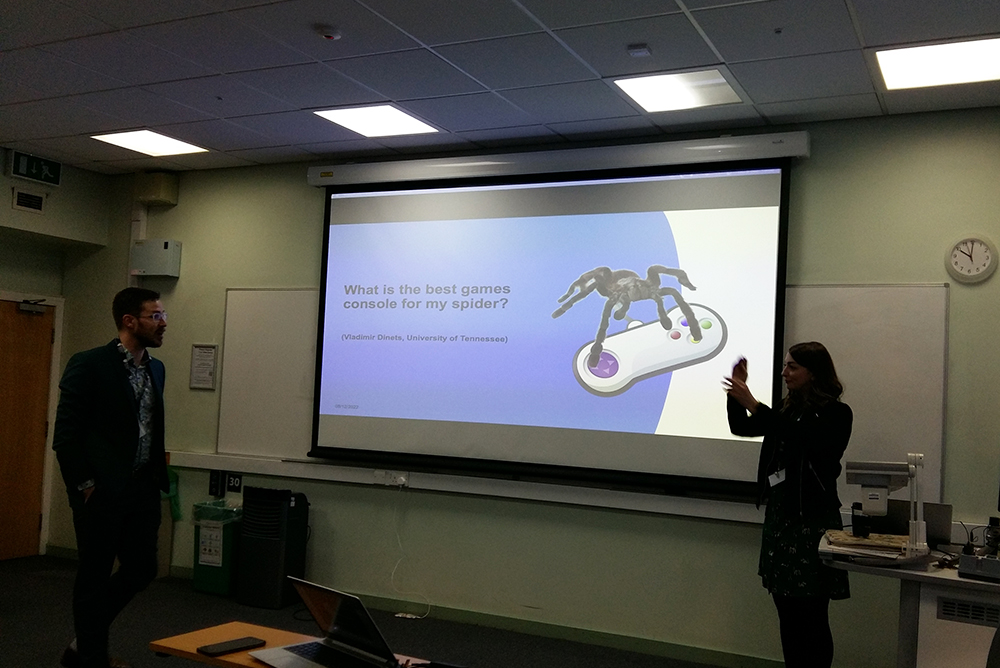After an hiatus of six years, Minding Animals will return, with a conference tentatively scheduled to be held 11 – 17 July, 2024. This was announced by the organizers in a message dated December 19, 2022. “Just like the postponed 2021 conference, Minding Animals 5 (MAC5) will be hosted by the Centre for Compassionate Conservation (CfCC) in the Transdisciplinary School at the University of Technology, Sydney (UTS).” (Message from Minding Animals International) The organizers refer to the Minding Animals Bulletin 53 regarding the vision of the conference and the preparation of the authors. “We believe that the greatest threat posed to the planet, to all planetary life, human or nonhuman animal, plant or otherwise, including the current pandemic, is the intersection of animal agriculture and the climate crisis. Hence, the urgency and criticality of climate as the key theme.” (Minding Animals Bulletin 53) Possible subtopics include “The biodiversity crisis and climate change”, “Rewilding and compassionate conservation”, “The animal industrial complex”, “Animals, the circular economy and sustainable food systems”, and “Animals in development and food sovereignty”.
Face Recognition for Bears in the Alps
At the end of the ACI conference, the “Paper Session 6” was held, which was titled “Investigating Human-Animal Relations”. Sarah Webber (University of Melbourne) gave a talk on “Watching Animal-Computer Interaction: Effects on Perceptions of Animal Intellect”. In the experiment, people observed orangutans interacting with computer applications. It was examined how they changed their judgments regarding the animals’ intelligence and behavior. The talk that followed came from Alexandra Morgan (Northumbria University) and was titled “Blind dogs need guides too: towards technological support for blind dog caregiving”. She addressed the needs of blind dogs and showed what gadgets are on the market to assist them. Her team developed an app called “My Blind Dogo” that could help owners of blind dogs. The session ended with a talk on “A Face Recognition System for Bears: Protection for Animals and Humans in the Alps” by Oliver Bendel (University of Applied Sciences and Arts Northwestern Switzerland). He presented an integrated system with cameras, robots, and drones that Ali Yürekkirmaz and he had designed. The ACI took place from 5 to 8 December 2022 in Newcastle upon Tyne. It is the world’s leading conference on animal-computer interaction. More information on the conference via www.aciconf.org/aci2022.
Wearables for Sled Dogs
On the last day of the ACI Conference (December 8, 2022), “Session 5: Sensors & Signals, Part II: Electric Boogaloo” started after the lunch break. Carlos Alberto Aguilar-Lazcano (CICESE-UT3) gave a talk on the topic “Towards a monitoring and emergency alarm system activated by the barking of assistant dogs”. The next presentation was “WAG’D: Towards a Wearable Activity and Gait Detection Monitor for Sled Dogs” by Arianna Mastali (Georgia Institute of Technology). According to her, studies have shown orthopedic injuries to be most common among sled dogs. These like to move very much, but repeatedly exceed their capabilities. To solve this problem, the team has developed a technical solution, a special wearable, with the help of which data on the condition of the animals are generated. “Spatial and Temporal Analytic Pipeline for Evaluation of Potential Guide Dogs Using Location and Behavior Data” was the title of the next talk, given by David L. Roberts (North Carolina State University), followed by “Comparing Accelerometry and Computer Vision Sensing Modalities for High-Resolution Canine Tail Wagging Interpretation”, given by Devon Martin (North Carolina State University). More information on the conference via www.aciconf.org/aci2022.
Talking Eggs
After the keynote on the morning of December 8, 2022, ACI2020 continued with “Paper Session 4: Sensors & Signals, Part I: Origin Stories”. David L. Roberts (North Carolina State University) presented on “Motion-Resilient ECG Signal Reconstruction from a Wearable IMU through Attention Mechanism and Contrastive Learning”. The next talk, “TamagoPhone: A framework for augmenting artificial incubators to enable vocal interaction between bird parents and eggs”, was given by Rebecca Kleinberger (Massachusetts Institute of Technology & Northeastern University). The starting point of her research was that some birds have pre-hatching vocal communication. The last presentation before the lunch break that was given online was “Simultaneous Contact-Free Physiological Sensing of Human Heart Rate and Canine Breathing Rate for Animal Assisted Interactions: Experimental and Analytical Approaches” by Timothy Holder and Mushfiqur Rahman (North Carolina State University). More information on the conference via www.aciconf.org/aci2022.
Time Savers or Toys?
The fourth day of the ACI2022 conference – December 8, 2022 – began with a keynote by Carys L. Williams (DogsTrust), titled “Time Savers or Toys? Realities of Animal Technology in Industry”. “Carys is a mixed-methods Research Officer at the UK’s largest dog welfare charity, Dogs Trust. Carys’ work has focused on practical and applicable dog behaviour and welfare research to improve the lives of dogs, especially those in Dogs Trust’s 22 rehoming centres (around 12,000 dogs a year!). For the last 2 years Carys has been project lead for the Dogs Trust Post Adoption Support longitudinal research project. She has additionally supported the charity’s move to collect more and better dog data, helping build exciting bespoke digital systems. Carys has also spent over a decade in the zoo industry and is currently a volunteer invertebrate keeper at ZSL London Zoo.” (Website ACI2022) Carys L. Williams started her keynote with a quote from Vladimir Dinets (University of Tennessee): “What is the best games console for my spider?” … She then turned to real-world issues, such as supporting the welfare of dogs through technological means. More information on the conference via www.aciconf.org/aci2022.
About Parrots and Dogs
The ACI2022 conference continued on the afternoon of December 7, 2022 after the coffee break (“Paper Session 3: Learning From and With Each Other”). Cristóbal Sepulveda Álvarez (Universidad de Chile) gave a talk on the topic “Measuring Digitally Comparative Abilities Between Discreet and Continuous Quantities through a Digital Enrichment Application”. He showed a parrot that had to choose different quantities on a touch screen. Dirk van der Linden (Northumbria University) was present on behalf of Jasmine Forester-Owen (Northumbria University). He spoke about “Noisy technology, anxious dogs: can technology support caregiving in the home?”. In their prototype, they combine noise detection and body language identification in dogs. Jérémy Barbay (Universidad de Chile) gave the last three presentations of the day: “Comparing Symbolic and Numerical Counting Times between Humans and Non-Humans Through a Digital Life Enrichment Application”, “Popping Up Balloons for Science: a Research Proposal”, and “A Loggable Aid to Speech (for Human and Non-Human Animals): A Research Proposal”. More information on the conference via www.aciconf.org.
Towards Exploring Perceptions of Dogs
The ACI2022 conference continued on the afternoon of December 7, 2022. “Paper Session 2: Recognising Animals & Animal Behaviour” began with a presentation by Anna Zamansky (University of Haifa). The title was “How Can Technology Support Dog Shelters in Behavioral Assessment: an Exploratory Study”. Her next talk was also about dogs: “Do AI Models ‘Like’ Black Dogs? Towards Exploring Perceptions of Dogs with Vision-Language Models”. She went into detail about OpenAI’s CLIP model, among other things. CLIP is a neural network which learns visual concepts from natural language supervision. She raised the question: “How can we use CLIP to investigate adoptability?” Hugo Jair Escalante (INAOE) then gave a presentation on the topic “Dog emotion recognition from images in the wild: DEBIw dataset and first results”. Emotion recognition using face recognition is still in its infancy with respect to animals, but impressive progress is already being made. The last presentation in the afternoon before the coffee break was “Detecting Canine Mastication: A Wearable Approach” by Charles Ramey (Georgia Institute of Technology). He raised the question: “Can automatic chewing detection measure how detection canines are coping with stress?”. More information on the conference via www.aciconf.org.
About Animal-centered Design
ACI2022 continued on December 7 with Paper Sessions. Number 1 was “Designing for Human-Animal Relations”. Clara Mancini from The Open University gave a talk on the topic “Politicising Animal-Computer Interaction: an Approach to Political Engagement with Animal-Centred Design”. She is one of the pioneers in the discipline of animal-computer interaction. This was followed by Dirk van der Linden’s presentation “Animal-centered design needs dignity: a critical essay on ACI’s core concept”. The scientist from the Northumbria University referred to the Swiss law, which assumes the dignity of living beings – animals as well as plants, it should be added. Minori Tsuji from Future University Hakodate spoke about the “Investigation on Enhancement of the Sense of Life in Safari Park Online Tours with Animal Breathing Reproduction System”. Visitors can touch artifacts with different breathing frequencies. The final contribution in the morning came from Jennifer Cunha (Parrot Kindergarten) and Corinne Renguette (Indiana University-Purdue University). It was about “A Framework for Training Animals to Use Touchscreen Devices for Discrimination Tasks”. The scientists taught various animals, such as a parrot, a rat and a dog, how to use tablets. More information on the conference via www.aciconf.org.
Exploring other Sensibilities
ACI2022 – the leading conference on animal-computer interaction – kicked off on December 5, 2022 at Northumbria University in Newcastle upon Tyne. After the workshop “Animal Centered Research beyond ACI: Exploring the Applicability of Animal Centered Principles to All Animal Research” was held on the first day, the workshop “Exploring other sensibilities – beyond human senses and aesthetics” was held on the second day. “This workshop aims to facilitate human participants to become more aware of other animals’ sensory and aesthetic sensibilities, raising points for discussion and future research within ACI. For all animals, being able to make sense of the environment is crucial in order to gain control and make informed choices, as well as to achieve competence in daily activities. Although human perception is limited by evolution, technology can enable us to perceive signals that may be meaningful for other species, thereby gaining insight and possibly empathy. Moreover, pursuing a multi-species perspective may foster inclusive approaches to design that aim to achieve a lighter environmental impact by taking into account the sensory experiences of other species.” (Website ACI2022) The workshop used innovative methods to achieve the goal. “We will offer participants a range of activities to challenge human senses and sense-making abilities, and then invite them to collaboratively design and test a system that incorporates some animal-centred sensory stimulation inspired by the activities previously undertaken.” (Website ACI2022) The participants mastered the tasks with great commitment and great pleasure. The entire conference program is available at www.aciconf.org/conference-program.
Defining Tomorrow
Animal-computer interaction (ACI) “is a rapidly growing field, which focuses on the interaction between animals and computing-enabled technology and for which the International Conference on Animal-Computer Interaction is the main convention venue” (Website ACI2022). ACI2022 will take place 5-8 December 2022, hosted by Northumbria University, Newcastle upon Tyne, UK. The “Emerging Work” track reflects early stage efforts that either: “1) will be of interest to the ACI community and likely to generate insightful, instructional, and/or spirited discussion, and/or 2) is early enough that it could benefit greatly from community feedback on direction, design, methods, etc.” (Website ACI2022) In this track, the paper “A Face Recognition System for Bears: Protection for Animals and Humans in the Alps” by Oliver Bendel and Ali Yürekkirmaz was accepted. It fits very well with this year’s conference theme, “Defining Tomorrow”. “The theme acknowledges the rapid growth in technology for animals with new products coming onto the market, normalising the use of technology in many human-animal relationships, and asks: where should we go next?” (Website ACI2022)









